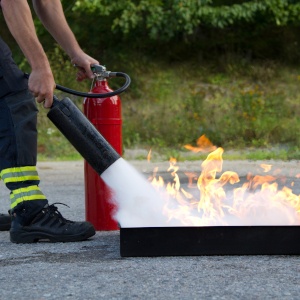Do you need help building your safety culture?
May 29, 2024
Every organization has a safety culture. If your organization’s safety culture isn’t where it needs to be, don’t worry! You can build, strengthen, and change safety culture.
|
What is Safety Culture?
Safety culture is a broad concept that is usually taken to reflect the qualities of the organizational culture that affect safety attitudes and behaviours. Simply put, it’s the “way things are done.” When the safety culture is strong, the people within the organization view safety as both an individual responsibility and an integral part of operations. Attitudes toward safety are also a major component of safety culture. So, what happens when the way people view safety needs to change? What happens when there’s a “not my responsibility” attitude? If you don’t feel that your safety culture is where it needs to be, there are ways to build it up. Need help building your safety culture? We offer consulting services. Contact us today to book a consultation! |
 |
Are you ready for an unscheduled Ministry inspection?
May 7, 2024
|
The thought of a surprise visit from the Ministry of Labour, Immigration, Training, and Skills Development (MLITSD) is usually fraught with anxiety. But, since the MLITSD and the Joint Health and Safety Committee (JHSC) share a common goal, a visit from the MLITSD shouldn’t be a source of concern.
One of the ways that the MLITSD helps organizations work toward safety objectives is to perform both scheduled and unscheduled inspections. Unscheduled inspections are officially known as health and safety compliance initiatives, but you may know them simply as blitzes. Compliance initiatives are part of the MLITSD’s ongoing workplace compliance initiatives, and they’re usually aimed at specific sectors, industries, or practices. |
VIEW CURRENT MINISTRY BLITZES BY SECTOR Construction Initiatives Industrial Initiatives Healthcare Initiatives Specialized Professional Services Initiatives All Sectors Initiatives |
Recognition and Appreciation Build Better (and Safer) Workplaces
April 25, 2024
|
When it comes to recognition and appreciation at work, the results are in! According to a Gallup poll report from workhuman.com, incorporating recognition and appreciation in the workplace increases employee satisfaction and productivity, and it makes them five times less likely to leave. This is good news for safety, too.
High turnover has detrimental effects on workplace safety. But there’s another reason to incorporate recognition and appreciation into your workplace safety program, and it’s called BBS or Behaviour-Based Safety. |
How effectively does your team communicate about safety?
April 18, 2024
|
In today’s day and age there are so many different methods and strategies to communicate safety. It’s important that thought is given as to which methods or approaches are required for specific situations and that barriers to effective communication are understood so we don't get caught up in avoidable communication pitfalls. These pitfalls can include a lack of knowledge or information, failure to set clear expectations, lack of attention to detail, selective listening, learning, and language barriers.
Many leaders and supervisors know their stuff, hence why they are in their role, but sometimes the team isn’t following the direction or communication provided. Problems are arising and the solution isn’t apparent. In many cases poor communication is the root cause of the problem. |
 |
What are the true impacts of poor training?
April 2, 2024
|
Poor training occurs more often than you might think, and it has a direct effect on employee performance. Failure to understand the relationship between training, employee performance, and safety performance, can be quite costly and have long-lasting impacts.
Impacts of poor training can be grouped into some basic categories: |
 |
How to Maximize the Benefits of your Health and Safety Training
March 15, 2024
|
Training is an investment. As with any investment, you’ll want to see a return. However, when it comes to health and safety training, sometimes it seems the training is all but forgotten once workers are back on the job. To maximize the ROI (return on investment) of health and safety training, concepts and procedures need to be regularly reinforced.
How to Maximize ROI in Training To ensure that the training you’re providing has a positive ROI, it must be regularly reinforced in the workplace. To reinforce training, try to think beyond reminders. Reminders may seem helpful, but workers can become dependent on them. Reminders are passive, whereas reinforcement is active. |
Measuring Return on InvestmentTo measure the ROI of a training program, use this formula: ( (Monetary benefits – Training Costs) / Training Costs) x 100 As an example, an employee takes training that costs $250. Using what they learned, that worker can save the company $300 by working more safely and efficiently. (300 – 250) / 250 = 0.2 0.2 x 100 = 20% This employee’s training resulted in a positive ROI of 20%. |
How to Combat Burnout in the Workplace
February 23, 2024
|
Think of a workplace hazard. What comes to mind? Rarely does anyone consider burnout a hazard. However, burnout may cause reduced productivity, increased errors, susceptibility to illness, and even anxiety and/or depression.
Burnout doesn’t happen overnight. Knowing the signs and mitigating the effects help combat burnout. In this article we cover: |
What is Burnout?Burnout is a chronic state of stress. Constantly working long hours, in high-stress, high-pressure settings, and/or managing a heavy workload are contributing factors. More than just being tired after a long day at work, Psychology Today defines burnout as: “A state of chronic stress resulting in:
Learn to spot the signs of burnout. Check out our Psychological Health and Safety eLearning Module! |
Fire is a risk in all workplaces. Are you prepared?
February 15, 2024
|
Fire is a risk in all workplaces. Some workplaces are at higher risk than others. Failure to have a fire safety plan in place could lead to increased damages, injuries, loss of inventory, and even fatality. To mitigate the risk, you must have an emergency response plan in place, run drills, teach employees how to use fire extinguishers, and continually review and update your fire safety program.
In this article we cover: |
 |
Is Your Office Desk Making You Get Sick?
February 4, 2024
|
Most of us clean at home. Yet, there are a surprising number of workers who admit to never cleaning their desks. Workers sometimes spend more time at their desks than they do in their homes, so keeping their desks clean just makes sense! Keeping workstations clean will also help stop the spread of cold, flu, and COVID-19 viruses.
By the NumbersThe average desk is 400 times dirtier than a toilet seat. And, if that doesn’t gross you out, how about this? Some workers eat at their desks and many of those don’t clean their desks beforehand. To state the obvious, that’s the equivalent of eating your sandwich off a toilet seat. Keeping your desk clean can also help reduce the risk of contracting colds, flu, and COVID-19 viruses. If you weren’t sold on desk hygiene before, we are betting you are now.
|
 |
Is Your JHSC Effective and Efficient?
January 16, 2024
|
Having an effective Joint Health and Safety Committee (JHSC) can have a positive impact on your organization’s bottom line.
Is your JHSC part of your organization’s strategic plan for meeting goals and objectives? If it’s not, it should be! In this article, we cover: |
 |
Stay safe while working outdoors in the Canadian winter
January 1, 2024
|
Many people who live in Canada pride themselves on their ability to make it through our notorious Canadian winters. The winter season is known for being cold and harsh. They can even be downright dangerous! For some, winter safety is about more than just warming up the car and buying the warmest parka – some Canadians work outdoors, and their work doesn’t stop just because it’s snowing.
For the many people who work outdoors over the Canadian winter, the season represents a time of heightened awareness and hyper-vigilance, because working in extreme freezing temperatures is hazardous. Risks include frostbite, windburn, dehydration, and hypothermia. |
 |




